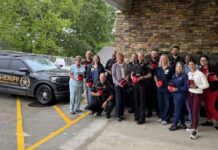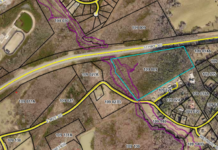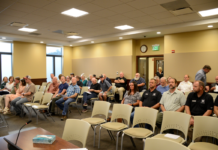
Just nine days into the month of September, Habersham has shattered its record for the number of COVID-19 cases diagnosed in one day, as well as hit 382 new cases. These aren’t just numbers, they’re lives, and the emergency services providers, healthcare workers and health departments across the region are stretched thin to keep patients alive.
On Sept. 2, Habersham County hit a record high for its daily count of new COVID-19 cases—160 confirmed cases of COVID-19 within the county. Over the past two weeks, the Georgia Department of Health reports that Habersham saw 527 new cases in adults and children.
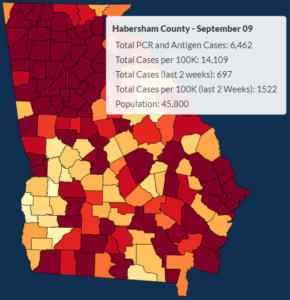
Before this week, the highest number of new cases recorded in Habersham over the course of one day was 66, back in December of 2020.
As Habersham County’s COVID-19 cases hit an all-time high, emergency services and healthcare workers are seeing and feeling the impact of hundreds of cases across the county.
Habersham County Emergency Services have seen a major uptick in cases. HCES Director Chad Black says that nearly every other call they receive is COVID-19 related, either for someone who is positive for COVID-19 or someone displaying COVID-19 symptoms.
“What we are seeing is very sick people that have not been vaccinated, and for those we see who have been, by large they are not as sick as those who have not been,” Black says. “If anyone is not taking this virus seriously, they should; it’s real, it’s contagious, it’s increasing, it’s a horrible experience for those [who are] really sick and it’s deadly.”
At Habersham Medical Center, 89 percent of the people who have been admitted are unvaccinated COVID-19 positive patients. An astounding 70 percent of all the hospital’s admissions have been COVID-19 positive.
“The current number of COVID-19 infections are trending upward at an alarming rate,” says HMC Vice President of Culture and Wellness, Kesha Clinkscale. “For example, the peak of the COVID-19 Pandemic at Habersham Medical Center occurred in January 2021. During that month, we treated 1,722 patients in the Emergency Department alone in a four-week timeframe. In the four-week timeframe in August 2021, we exceeded that number by an astonishing 1,013 more patients.”
In Habersham County, only 35 percent of residents are vaccinated. The HMC, District Two Public Health and HCES all encourage Habersham County residents to consider getting the vaccine.
“The strains we are seeing now are more contagious than previous ones,” says Natasha Young, District Two Public Health Information Officer. “We are also seeing a decrease in the usage of mitigation strategies like wearing a mask and social distancing, combined with the low vaccination rates, it is creating an opportunity for the virus to replicate and become stronger, making it more difficult to control the spread.”
Alongside the alarming increases Habersham is seeing in COVID-19 cases, Habersham’s emergency services are being overwhelmed for other reasons, too.
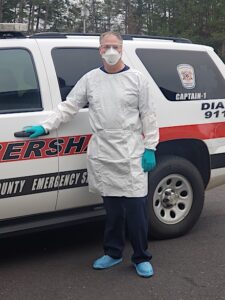
Black says that some calls they have received are from people who think ambulance transport will help them be seen faster in the emergency room, which isn’t true at all. For non-urgent issues, people should see their primary care physician, or go to an urgent care facility.
“Hospitals are at capacity, and in turn, our units are tied up many times waiting to off-load the patients to the Emergency Rooms,” Black says. “Call if you need us, but don’t use 911 for non-emergency type calls, it only makes the overloaded system more fragile.”
Young says that the Habersham community needs to work together to keep their neighbors out of the hospital. Young says Northeast Georgians need to get vaccine numbers up, and to continue to follow CDC recommendations to slow the spread.
“Behind every COVID-19 related statistic mentioned above is a real person— someone’s parent, child, spouse, friend, neighbor or loved one,” says Clinkscale. “Some people can say that they don’t know anyone who has had COVID-19. That’s a very small number of people. For the rest of us, knowing someone who has suffered from the virus or died from it can bring about a great deal of sadness – a sadness that, for the most part, could have been prevented.”



